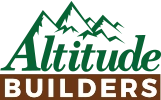Energy efficiency in Colorado post-frame buildings requires careful consideration of insulation strategies that address our extreme temperature swings, low humidity, and intense high-altitude sun exposure. With heating costs rising and summer cooling becoming increasingly important even in mountain communities, choosing the right insulation system for your pole barn or barndominium can significantly impact both comfort and long-term operating costs.
Post-frame construction offers unique advantages for creating highly efficient building envelopes, with deep wall cavities and roof assemblies that accommodate substantial insulation packages. Understanding your options helps ensure your building performs optimally whether facing subzero winters in Westcliffe or summer heat in Pueblo, while managing moisture concerns specific to our Colorado climate.
Fiberglass Insulation Systems
Traditional fiberglass remains the most common and cost-effective insulation choice for post-frame buildings, offering reliable performance when properly installed with appropriate vapor barriers for Colorado's dry climate.
- Standard Batts
R-13 to R-19 in walls, R-30 to R-38 in ceilings for basic thermal protection - Installation Considerations
Requires careful fitting around posts and proper vapor barrier placement - Cost Efficiency
Lowest material cost at $0.50-1.00 per square foot installed
- Moisture Management
Vapor barriers essential on warm side to prevent condensation issues - Compression Concerns
Loses effectiveness if compressed, requiring proper installation spacing - Best Applications
Heated workshops, storage buildings with moderate climate control needs
Spray Foam Insulation Options
Spray foam provides superior air sealing and insulation values, particularly valuable in Colorado where wind-driven heat loss can significantly impact energy efficiency in traditional installations.
Closed-cell spray foam achieves R-6 to R-7 per inch, creating both insulation and vapor barrier in one application while adding structural rigidity to metal panels. This proves especially beneficial in high-wind areas like the Palmer Divide, where air infiltration commonly undermines other insulation types' effectiveness.
Open-cell foam offers R-3.5 per inch at lower cost, working well for interior applications where moisture control is less critical. The seamless application eliminates thermal bridging around posts and purlins, addressing a major efficiency weakness in post-frame construction while accommodating building movement without cracking or separating.
Rigid Board and Hybrid Systems
Combining insulation types often provides optimal performance for Colorado's climate extremes, balancing cost, efficiency, and moisture management in sophisticated building envelope designs.
- Exterior Rigid Foam
Continuous insulation eliminating thermal bridging through structural members - Double-Layer Systems
Fiberglass batts plus rigid foam achieving R-30+ wall assemblies - Radiant Barriers
Reflective systems reducing summer heat gain from metal roofing
- Thermal Break Details
Isolating metal components to prevent condensation and heat transfer - Cost-Performance Balance
Strategic placement of premium insulation where most beneficial - Installation Sequencing
Coordinating multiple products for optimal air sealing and performance
Climate Zone Considerations
Colorado's diverse climate zones require different insulation strategies, with building location dramatically affecting both code requirements and optimal insulation choices for comfort and efficiency.
Properties in mountain communities like Woodland Park fall into Climate Zone 6 or 7, requiring minimum R-20 walls and R-49 roofs for conditioned spaces. Valley locations near Pueblo might meet Zone 5 requirements with R-13 walls and R-38 roofs, though upgrading beyond minimums typically provides excellent return on investment given our temperature extremes.
Altitude intensifies both heating and cooling demands, with intense solar gain requiring consideration even in cold climates. South-facing metal walls can reach 140°F in summer, making reflective barriers or light colors essential for shops and barndominiums. Meanwhile, nighttime radiation cooling can drop temperatures 40°F within hours, demanding insulation systems that moderate these swings.
Selecting appropriate insulation transforms your post-frame building from a simple shelter into an efficient, comfortable space suitable for any use. At Altitude Builders, we guide clients through insulation decisions that balance upfront costs with long-term performance, ensuring your building maintains comfort through Colorado's weather extremes while minimizing energy expenses for decades to come.
